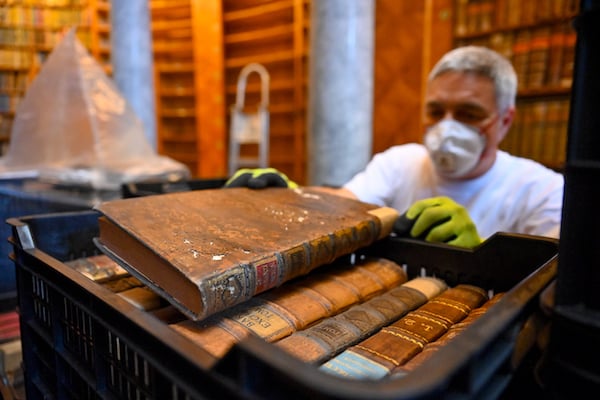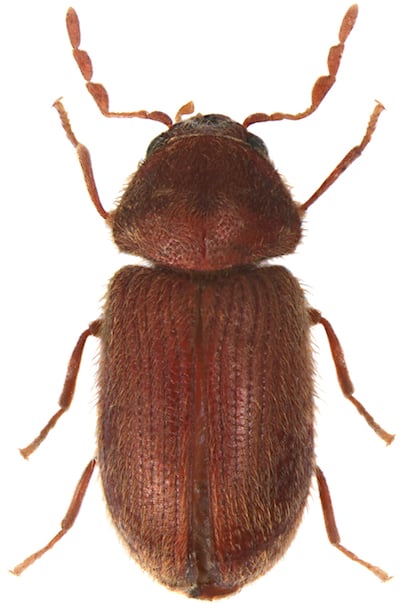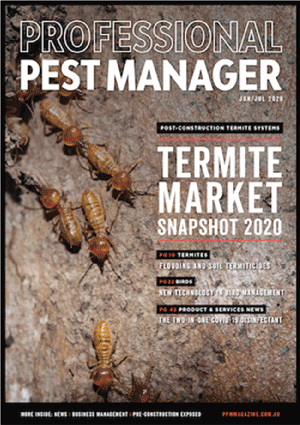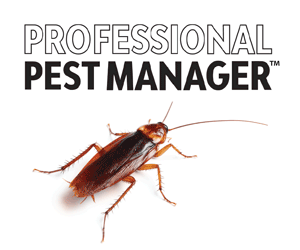A drugstore beetle infestation has been detected in the irreplaceable book collection in Hungary’s oldest library at Pannonhalma Archabbey. A seven-month eradication program is in place.
As pest managers we often like to classify pests that damage materials and food as either fabric pests or stored product pests, but the reality is that a number of pest insects have broad diets and can cause damage to both materials and stored products. So, when confronted with an unusual pest problem, where damage is visible but the pest has yet to be identified, it’s important to keep an open mind.
The drugstore beetle, Stegobium paniceum, also called the biscuit or bread beetle, eats a range of dry cereal and animal materials. It is also a common pest of rodent bait. So, it may not be the first pest that springs to mind upon the discovery of extensive damage to books. Such was the situation at Hungary’s oldest library, the 1,000-year-old Pannonhalma Archabbey, a UNESCO World Heritage site.
The infestation was first detected during routine cleaning, when the librarian noticed unusual layers of dust on the shelves and upon further investigation spotted holes in some of the books’ spines. On opening the damaged books, galleries could be seen in the pages where the larvae had been feeding.

The culprit was identified as the drugstore beetle. Even though they prefer dried plant foods, especially cereals, they are also attracted to the gelatin and starch-based adhesives found in books. Although the damaged books have only been found in one area of the museum, that still puts around 100,000 books at risk.

To deal with the problem they have closed the museum for at least seven months to treat the 100,000 books in the infested area and monitor the remainder of the museum. The treatment process involves placing the books in crates and sealing them inside plastic sacks. Oxygen is then removed from the bags and replaced by nitrogen and left in place for six weeks. The process is repeated as they work through the book collection.

With such an irreplaceable collection, the treatment and inspection process needs to be thorough. Previously the library only had to deal with mould issues, but now they are acutely aware of the insect threat. The curators believe insects will only become more of a problem with the warming temperatures, which will speed up insect life cycles and therefore infestations, meaning damage could develop rapidly. Regular, comprehensive monitoring and inspections will be key.
Image credit: Used with kind permission from Pannonhalma Archabbey


